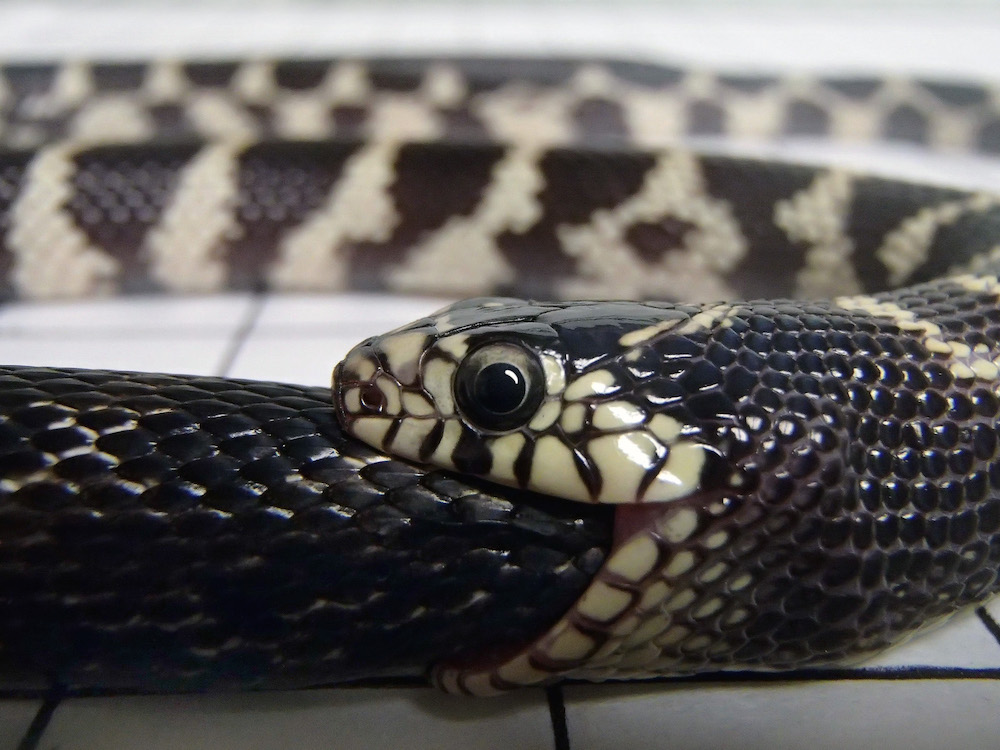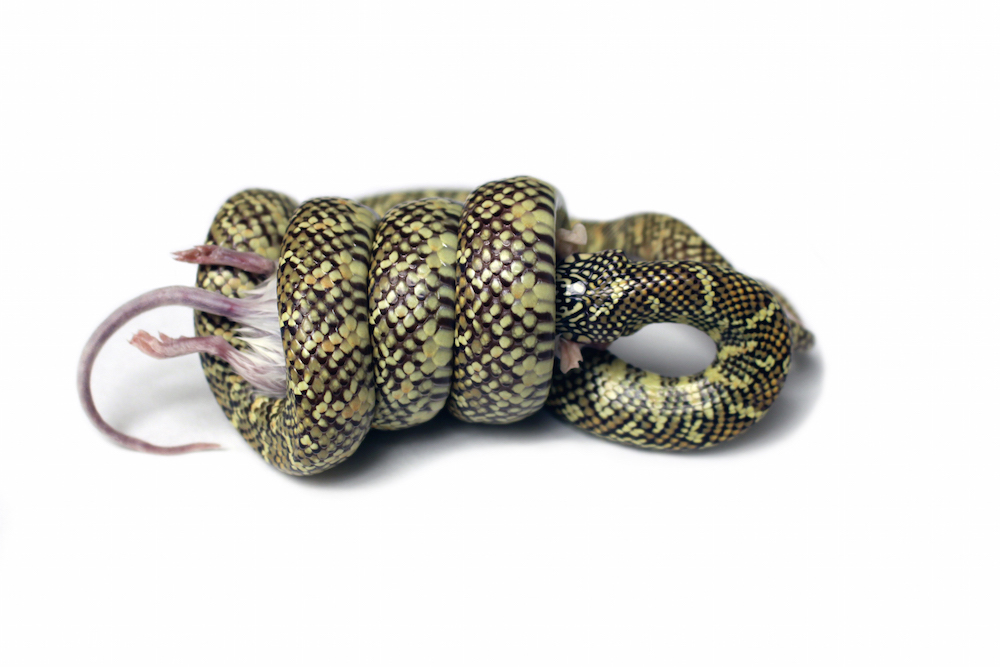'King of Snakes' Defeats Larger Serpents by Squeezing Them to Death

How does the mighty kingsnake overpower the even mightier rat snake? It uses its tremendous constriction power, a new study finds.
It may not be the largest snake, but the "king of snakes" earned its name because it eats other snakes, including the rat snake. The latter kind of snake coincidentally got its name because it eats rats, and some species can grow to be 10 feet (3 meters) long. But researchers could only guess how kingsnakes, which can reach a length of up to 6 feet (1.8 m), triumphed over larger snakes, so two herpetologists set out to solve the mystery.
"It doesn't make sense," said study lead researcher David Penning, an assistant professor of biology at Missouri Southern State University. "Kingsnakes should avoid rat snakes, because rat snakes should be stronger; they should be more dangerous; they should be able to defend themselves. But kingsnakes walk right up to the situation and then consume" the thing that is bigger than they are. [How the King of Snakes Makes a Meal Out of Rival Serpents (Video)]
Serpentine experiments
Although kingsnakes eat many types of snakes (including other kingsnakes), Penning and his colleague focused on three species of kingsnake (Lampropeltis californiae, L. getula and L. holbrooki) and three species of rat snake (Pantherophis alleghaniensis, P. guttatus and P. obsoletus) because all of these snakes share a habitat — the lower two-thirds of the continental United States.
However, the team wasn't quite sure where to begin. "We didn't have any idea of what to expect," Penning told Live Science. "No preliminary data."
To get started, they took a look at the snakes' anatomy.
"Are they different internally?" Penning wondered. "Like, are kingsnakes maybe housing more muscle?" To find the answer, Penning and study co-researcher Brad Moon, an associate professor of biology at the University of Louisiana at Lafayette, compared the muscles of 36 kingsnakes and rat snakes that were preserved as part of a teaching collection.
Sign up for the Live Science daily newsletter now
Get the world’s most fascinating discoveries delivered straight to your inbox.
But, after hours of complex dissection, "Lo and behold, there was no quantifiable difference," Penning said.
Next, the researchers tested the snakes' abilities to escape. Perhaps rat snakes were "just terrible" at escaping once kingsnakes had them in their grasp, Penning reasoned. To find out, they tested 98 live snakes by taping the snakes' heads to a flat surface and placing a pressure gauge at the other end of the snakes' bodies. But that experiment also failed to find a difference.
They learned, unsurprisingly, that larger serpents are stronger than smaller snakes, but that the rat snakes were just as strong as the kingsnakes.
"We were 0 for 2," Penning said.
Under pressure
Finally, the team tested the snakes' constriction strength — that is, the power snakes exert when they coil around prey to stop blood flow.
The scientists studied 182 snakes by giving them dead mice that were attached to pressure sensors. All of the snakes coiled around the prey one to three times, but the similarities ended there. Of the 89 kingsnakes, 91 percent formed uniform loops, like the coil of a spring (or of a curly french fry, Penning joked). These uniform coils may maximize the force with which the snake squeezes its prey, he said.
In contrast, just about 5 percent of the 93 rat snakes formed uniform, spring-like coils. The rest had varied postures, with loops at different positions and angles, Penning said.

These uniform coils may partly explain why the kingsnakes could squeeze prey with a force that was between 0.7 to 6 lbs. per square inch (5 to 41 kilopascal pressure units), while rat snakes had a lower range of 0.4 to 3 lbs. psi (3 to 23 kPa), the researchers said. [The World's 6 Deadliest Snakes]
"[This] indicates that kingsnakes win in predatory encounters because of their superior constriction performance," the researchers wrote in the study. However, there might be other factors at play. For instance, perhaps kingsnakes use different types of muscle contractions that are stronger than the rat snakes', the researchers said.

The study is an informative one, said Stephen Secor, a professor of biological sciences at the University of Alabama, who was not involved in the study.
"They are finding that the kingsnakes were able to induce much greater peak constriction pressure than the rat snakes and the corn snakes [a type of rat snake]," Secor told Live Science.
The study was published online today (March 15) in the Journal of Experimental Biology.
Original article on Live Science.

Laura is the archaeology and Life's Little Mysteries editor at Live Science. She also reports on general science, including paleontology. Her work has appeared in The New York Times, Scholastic, Popular Science and Spectrum, a site on autism research. She has won multiple awards from the Society of Professional Journalists and the Washington Newspaper Publishers Association for her reporting at a weekly newspaper near Seattle. Laura holds a bachelor's degree in English literature and psychology from Washington University in St. Louis and a master's degree in science writing from NYU.









